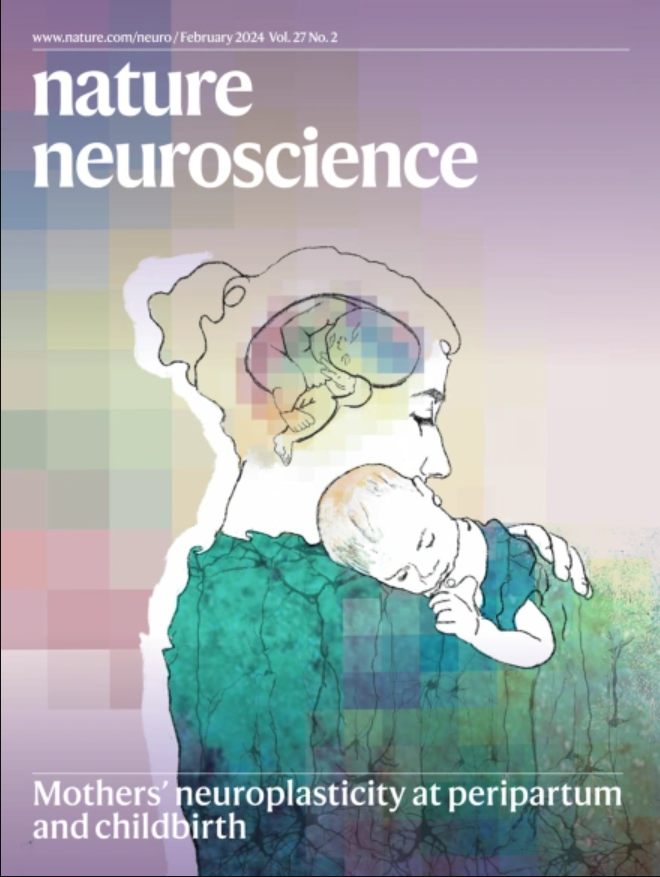胆碱能中间神经元对纹状体多巴胺输出的轴突制动作用
IF 20
1区 医学
Q1 NEUROSCIENCES
引用次数: 0
摘要
轴突去极化是躯体动作电位触发轴突神经递质释放的必要条件。本研究表明,纹状体胆碱能中间神经元(ChIs)和小鼠多巴胺轴突上的尼古丁受体(nAChRs)阻断了这种关系。在nachr介导的去极化后,随后的去极化事件的多巴胺释放被抑制了约100 ms。这种抑制不是由于多巴胺或乙酰胆碱的消耗,而是由于nachr介导的去极化后多巴胺轴突的有限再激活,并且在背侧纹状体比腹侧纹状体更突出。在体内,nAChR主要抑制多巴胺的释放,因为nAChR在背纹状体中的拮抗作用提高了多巴胺传感器GRABDA2m的光纤光度法检测到的多巴胺,并促进了条件位置偏好。我们的研究结果表明,通过nachr作用的ChI短暂地限制了多巴胺神经元后续动作电位的多巴胺轴突的再激活,因此根据ChI活性产生多巴胺释放的动态逆标。本文章由计算机程序翻译,如有差异,请以英文原文为准。


An axonal brake on striatal dopamine output by cholinergic interneurons
Depolarization of axons is necessary for somatic action potentials to trigger axonal neurotransmitter release. Here we show that striatal cholinergic interneurons (ChIs) and nicotinic receptors (nAChRs) on mouse dopamine axons interrupt this relationship. After nAChR-mediated depolarization, dopamine release by subsequent depolarization events was suppressed for ~100 ms. This suppression was not due to depletion of dopamine or acetylcholine, but to a limited reactivation of dopamine axons after nAChR-mediated depolarization, and is more prominent in dorsal than in ventral striatum. In vivo, nAChRs predominantly depressed dopamine release, as nAChR antagonism in dorsal striatum elevated dopamine detected with optic-fiber photometry of dopamine sensor GRABDA2m and promoted conditioned place preference. Our findings reveal that ChIs acting via nAChRs transiently limit the reactivation of dopamine axons for subsequent action potentials in dopamine neurons and therefore generate a dynamic inverse scaling of dopamine release according to ChI activity. Cholinergic interneurons act at nicotinic receptors to depress dopamine release, interrupting its relationship to dopamine neuron firing and supporting an inverse scaling of dopamine release according to cholinergic activity.
求助全文
通过发布文献求助,成功后即可免费获取论文全文。
去求助
来源期刊

Nature neuroscience
医学-神经科学
CiteScore
38.60
自引率
1.20%
发文量
212
审稿时长
1 months
期刊介绍:
Nature Neuroscience, a multidisciplinary journal, publishes papers of the utmost quality and significance across all realms of neuroscience. The editors welcome contributions spanning molecular, cellular, systems, and cognitive neuroscience, along with psychophysics, computational modeling, and nervous system disorders. While no area is off-limits, studies offering fundamental insights into nervous system function receive priority.
The journal offers high visibility to both readers and authors, fostering interdisciplinary communication and accessibility to a broad audience. It maintains high standards of copy editing and production, rigorous peer review, rapid publication, and operates independently from academic societies and other vested interests.
In addition to primary research, Nature Neuroscience features news and views, reviews, editorials, commentaries, perspectives, book reviews, and correspondence, aiming to serve as the voice of the global neuroscience community.
 求助内容:
求助内容: 应助结果提醒方式:
应助结果提醒方式:


